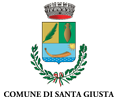Discover Romanesque: Peoples and Legends
Matilda of Canossa
Matilda of Canossa was born in 1046, the third daughter of Boniface of Canossa and Beatrice of Lotaringia. The wide possessions of Canossa’s dynasty had been recently enlarged with the March of Tuscia, donated by the emperor Conrad II to Boniface as an acknowledgement of his military support. Therefore, the feud assigned to Matilda after the death of her elder brothers, of her father and, eventually, her mother Beatrice (in 1076) included a fair part of central-northern Italy, from Tuscany to Lombardy, placing the Canossa household in a position of extraordinary power on the European political scene of the age. Matilda, like her mother, strenuously supported the popes in their continuous fights against the emperor during the long years of the Fight for the Investitures. She had a very close bond with Anselmo da Baggio, bishop of Lucca and later pope under the name of Alexander II; then, with Ildebrando di Soana, later on a pope under the name of Gregory VII. Right in Canossa, in Matilda’s castle, Gregory VII would humiliate Henry IV, obliging him to wait for three days, out in the snow, to obtain the revocation of his excommunication by the pope.
Lucca and Pisa also fell within the Canossian dominions: indeed, on several occasions, the placita issued by Matilda during her stays in Tuscany were drafted in the territory of the pieve of S. Giorgio di Brancoli, where the countess used to reside.
According to a legend, Matilda reiterated her request to pope Gregory VII to be enabled to celebrate Mass, despite of her womanly condition. The pope subordinated his acceptance of such request to the edification of at least 100 churches. Matilda almost reached that target, building as many as 99 churches. Each territory associated to the countess, then, adjusted the legend in a local key: many religious buildings in Emilia argue to be the ‘ninety-ninth church’, whereas in the region of Lucca a version was handed down stating that Matilda had 99 churches built within the city walls, to explain the appellation of Lucca – still now very common – as ‘the town of a hundred churches’.
























